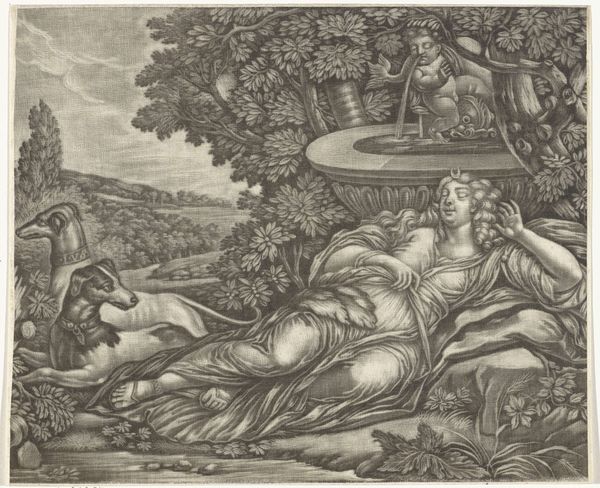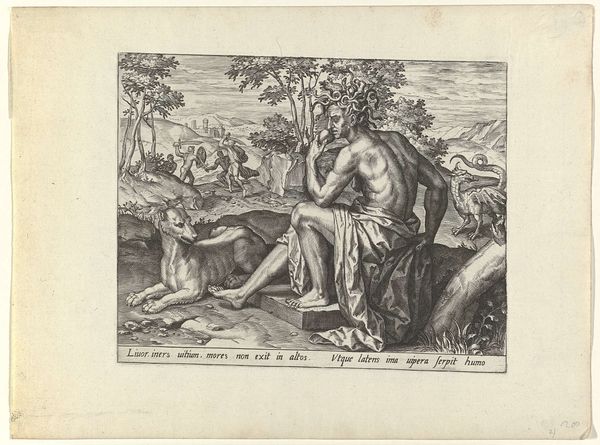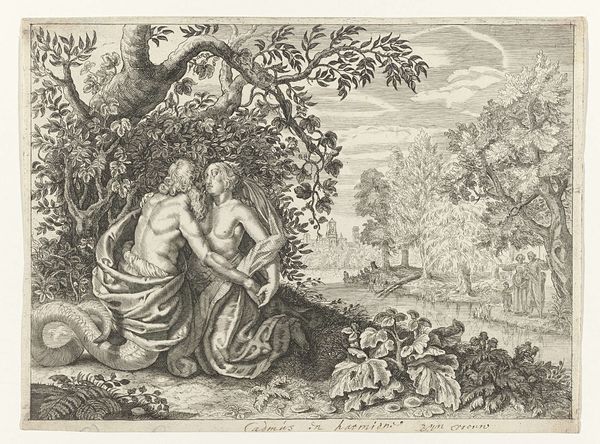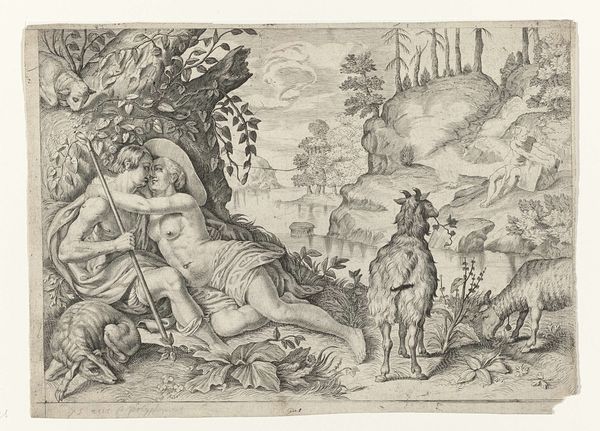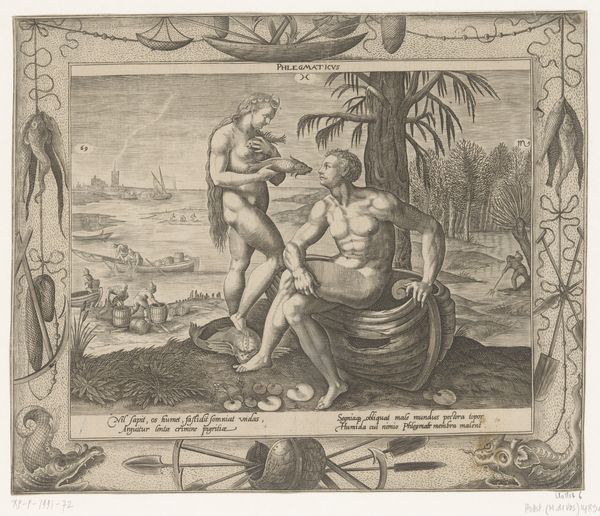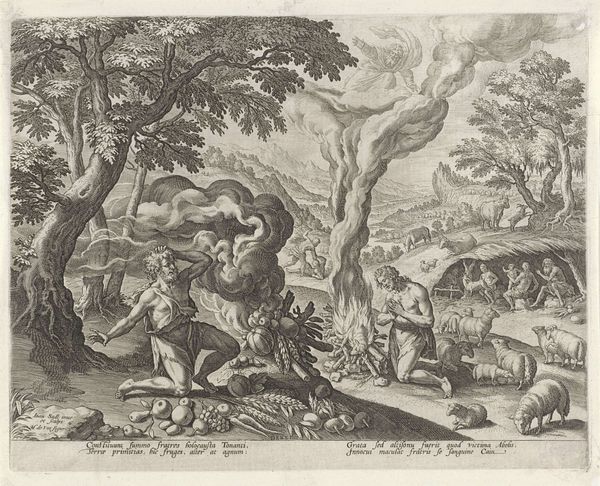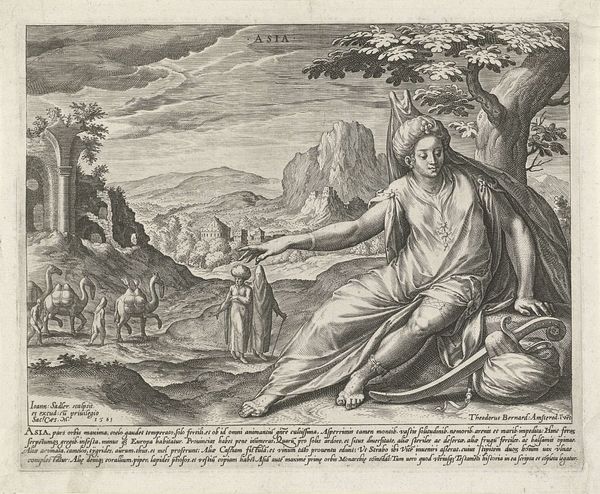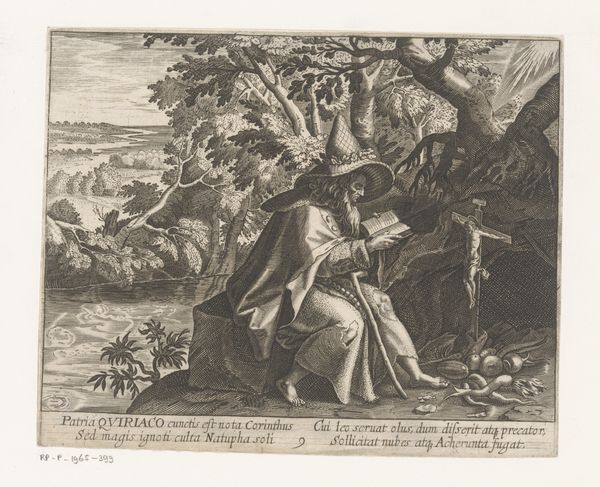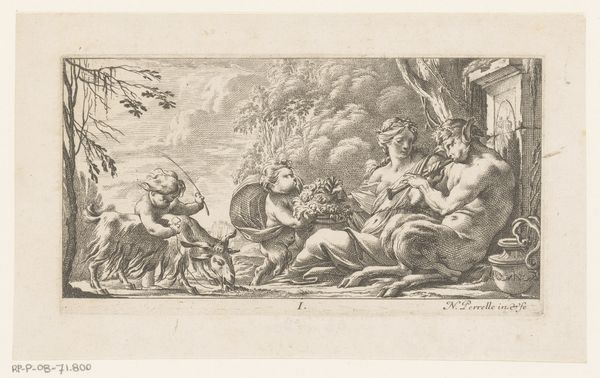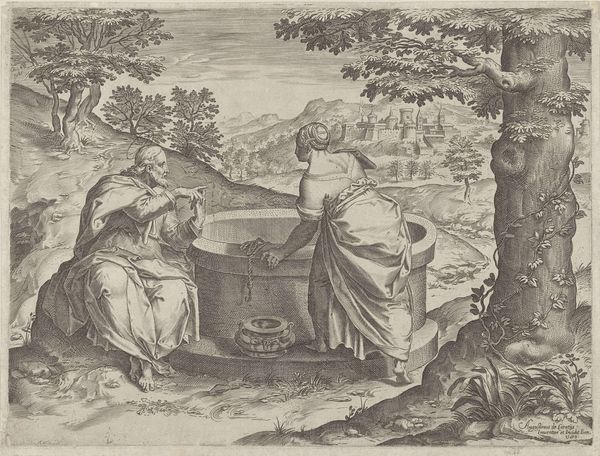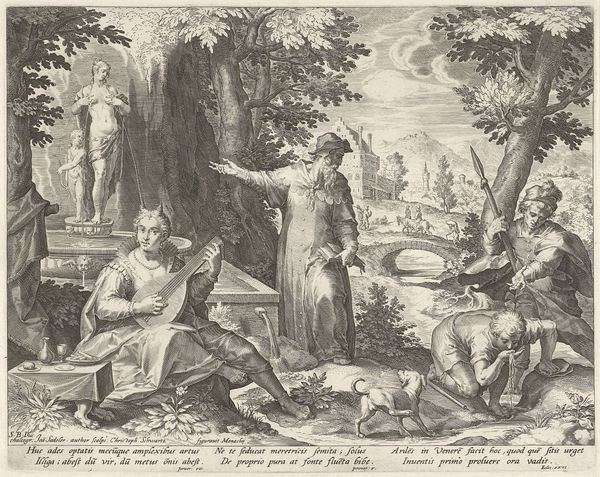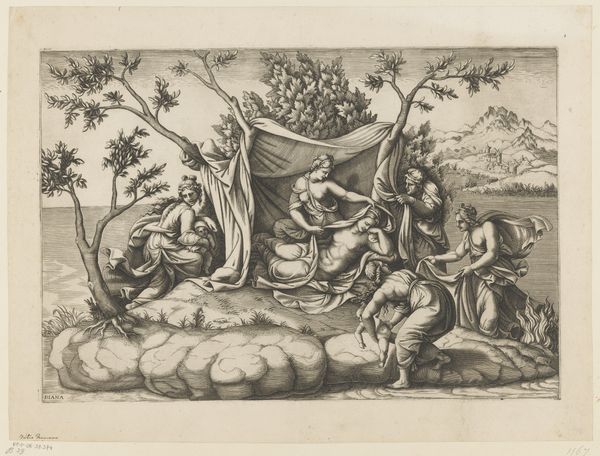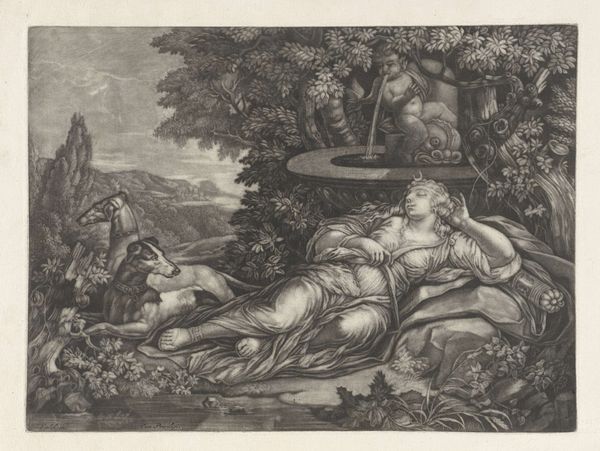
print, engraving
#
allegory
# print
#
landscape
#
mannerism
#
figuration
#
history-painting
#
engraving
Dimensions: height 174 mm, width 226 mm
Copyright: Rijks Museum: Open Domain
Curator: "Lente," or "Spring," is an engraving made by Johann Sadeler I, sometime between 1580 and 1584. The engraving depicts an allegorical figure of spring, surrounded by scenes of nature awakening. It strikes me as a particularly idealized vision. What draws your eye when you look at this engraving? Editor: Well, the composition feels almost split. We've got the figure in the foreground, kind of classically posed, and then this bustling landscape in the background. I’m curious about the juxtaposition, and the tension between this serene, almost godlike figure and this lively scene playing out behind her. How does it all come together? Curator: That tension is key. The allegorical figure, representing Spring, is shown not in isolation but actively engaged *with* a specific social reality. Who does spring truly benefit? Look closely: is she welcoming to everyone? Mannerism, after all, was flourishing during a period marked by significant social stratification and power dynamics. Sadeler subtly directs us to the question of how ideals intersect with real-world inequalities. How might contemporary critical race theory help us decode who benefits and who is marginalized by this image of springtime abundance? Editor: So, it’s less about pure celebration of nature, and more about whose vision of spring is being presented, and who has access to it? The hunting scene, for instance, signals a certain class and privilege, right? Curator: Exactly. The act of depicting this hunt reminds us to question the seemingly universal idea of 'spring.' The poem etched below, stating that "Here is the most beautiful face of the world" presents the point of view of the social group which could perform acts of conspicuous consumption like these. Are there aspects that seem outdated, reinforcing the values of that era, from a contemporary point of view? Editor: This makes me look at the image so differently! The whole notion of "spring" becomes charged with layers of historical and social meaning. Thank you! Curator: And thank you! It’s in these dialogues that art history comes alive, showing how past and present continually inform each other.
Comments
No comments
Be the first to comment and join the conversation on the ultimate creative platform.
